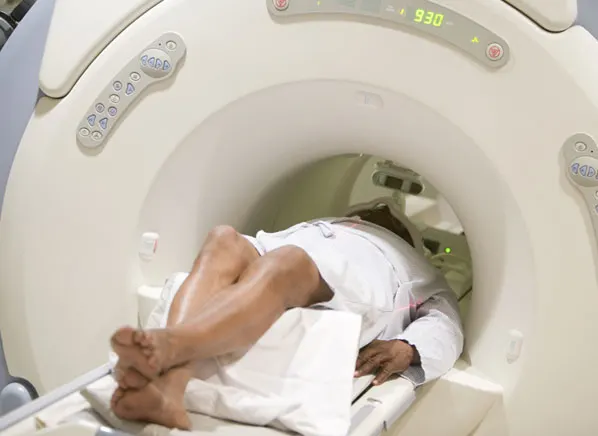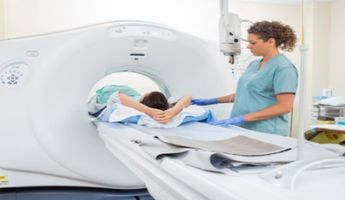Abdominal CT Scan in Spain
Find the best clinics for Abdominal CT Scan in Spain
No clinics available
Vietnam offers the best prices Worldwide
Price: $ 42

WHY US?
At Medijump, we're making medical easy. You can search, compare, discuss, and book your medical all in one place. We open the door to the best medical providers worldwide, saving you time and energy along the way, and it's all for FREE, no hidden fees, and no price markups guaranteed. So what are you waiting for?

Free

Best Price

Widest Selection

Risk-Free
What do you need to know about Abdominal CT Scan in *Spain?

When considering Abdominal CT Scan in Spain, it's critical to understand that this is an advanced imaging procedure that employs state-of-the-art technology to provide highly detailed visuals of various organs in the abdomen. This includes the liver, kidneys, and digestive tract. It's primarily used for diagnostic purposes, helping physicians pinpoint the cause of symptoms or monitor the progression of certain diseases and the efficacy of treatments. This outpatient procedure by a trusted clinic can be performed on both adults and children.
An abdominal CT scan is used to help your doctor see the organs, bones, and blood vessels located in the abdominal cavity. The CT scan provides multiple images to help your doctor see numerous different views of the abdomen. An abdominal CT scan is used when your doctor suspects an abnormality in your abdominal area, but cannot find enough information through a lab test or physical exam.
Some of the reasons your doctor may recommend an abdominal CT scan include:
-
A mass in your abdomen that can be felt
-
Abdominal pain
-
Unexplained weight loss
-
Kidney stones (to check the location and the size of the stones)
-
Infections, such as appendicitis
-
Inflammation of the intestines
-
Recent cancer diagnosis
-
To check for intestinal obstruction
-
Injuries following trauma
What is the cost of Abdominal CT Scan in Spain?
The cost of a Abdominal CT Scan in Spain is dependent on several factors, including the complexity of the procedure, the use of contrast materials, and the fees of the healthcare providers. While these elements vary, remember to confirm the total cost, inclusive of laboratory tests or medications, before proceeding. It is also beneficial to verify your insurance coverage for this procedure.
What does a Abdominal CT Scan Procedure Involve?
The Abdominal CT Scan, also known as an Abdominal CT Scan, is a non-invasive diagnostic procedure that produces detailed images of your abdominal organs. The process starts by having you lie on a table that slides into the CT scanner, a large donut-shaped machine. As the table moves slowly through the scanner, the machine takes a series of X-ray images from different angles.
Throughout the procedure, which typically takes about 30 minutes, you'll be asked to hold your breath for a few seconds to prevent any movement that could blur the images. The images taken are then sent to a computer where they are combined to create cross-sectional images or 'slices' of the body. This provides your doctor with much more detailed information than standard X-rays. This detailed view aids in diagnosing diseases, monitoring the progression of chronic illnesses, and planning for certain types of surgery.
Post-scan, you can usually resume your everyday activities. The radiologist will analyze the images and send a report to your doctor, who will discuss the results with you at a follow-up appointment. It's important to remember that while the Abdominal CT Scan is a highly effective tool, it does expose you to more radiation than regular X-rays. Therefore, it's generally not recommended for pregnant women or individuals who have had multiple CT scans in the past.
How Long Should I Stay in Spain for a Abdominal CT Scan Procedure?
The Abdominal CT Scan or Abdominal CT Scan is an outpatient procedure, which means you can leave the clinic on the same day. The scan itself usually takes about 30 minutes, although you might need to arrive at the clinic earlier to prepare. For instance, you might need to drink a contrast material before your scan, which can take an hour or two to move through your body.
After your Abdominal CT Scan, you should be able to return home or to your accommodation in Spain immediately. However, if you were given a sedative to help you relax during the procedure, you might need to wait at the clinic until the effects wear off. You should also arrange for someone to drive you home, as it's not safe to drive or operate machinery for 24 hours after having a sedative. While you might not need to stay in Spain for more than a day for the Abdominal CT Scan itself, you might need to wait a few days for the results. Therefore, it's a good idea to plan your visit to Spain accordingly.
What's the Recovery Time for Abdominal CT Scan Procedures in Spain?
The recovery time for a Abdominal CT Scan is impressively short. You can resume your normal activities immediately after the scan. However, it is strongly recommended that you hydrate adequately to expel any contrast material from your body. Be vigilant for any side effects such as a rash, itching, or difficulty breathing, which could signal an allergic reaction to the contrast material.
What's the Success Rate of Abdominal CT Scan Procedures in Spain?
The success of an Abdominal CT Scan or Abdominal CT Scan is usually measured by its ability to accurately diagnose or monitor a medical condition. This procedure is known for its high accuracy and reliability, making it one of the most commonly used diagnostic tools in medicine. The success rate can be affected by several factors, including the patient's body size, the quality of the CT scanner, and the experience of the radiologist.
According to several health studies, CT scans reveal abnormalities in approximately 90% of cases. Because of this high success rate, health issues can be detected and treated early, potentially saving lives. However, keep in mind that no test is perfect, and a CT scan can occasionally miss or misread certain conditions. As a result, your doctor in Phitsanulok may suggest additional tests or treatments to validate the results of your Abdominal CT Scan.
Are there Alternatives to Abdominal CT Scan Procedures in Spain?
While alternatives such as ultrasound and MRI scans exist, they are used based on specific medical conditions. For instance, an ultrasound might be the option for pregnant women, while patients with kidney problems might opt for an MRI. It is essential to note that the Abdominal CT Scan often provides more detailed images and is more efficient in diagnosing certain conditions.
What sort of Aftercare is Required for Abdominal CT Scan Procedures in Spain?
Aftercare for a Abdominal CT Scan in Spain mainly involves monitoring for any potential side effects from the contrast material. These may include rash, itching, or difficulty breathing. If these occur, patients should seek immediate medical attention. In most cases, patients can resume their normal activities immediately. However, they are advised to drink plenty of fluids to help flush out any remaining contrast material from their body. A follow-up appointment may also be scheduled to discuss the results of the scan.
There is no special aftercare after a CT scan. However, if you received a contrast during the procedure and you have a history of kidney function problems, your doctor may recommend a follow-up test of your kidney function.
Whilst the information presented here has been accurately sourced and verified by a medical professional for its accuracy, it is still advised to consult with your doctor before pursuing a medical treatment at one of the listed medical providers
No Time?
Tell us what you're looking for and we'll reachout to the top clinics all at once
Enquire Now

Popular Procedures in Spain
Prices Start From $4

Prices Start From $23

Prices Start From $11

Prices Start From $11

Recommended Medical Centers in Spain for procedures similar to Abdominal CT Scan

- Interpreter services
- Translation service
- Religious facilities
- Medical records transfer
- Medical travel insurance
- Health insurance coordination
- TV in the room
- Safe in the room
- Phone in the room
- Private rooms for patients available

- Interpreter services
- Translation service
- Religious facilities
- Medical records transfer
- Medical travel insurance
- Health insurance coordination
- TV in the room
- Safe in the room
- Phone in the room
- Private rooms for patients available

- Interpreter services
- Translation service
- Religious facilities
- Medical records transfer
- Medical travel insurance
- Health insurance coordination
- TV in the room
- Safe in the room
- Phone in the room
- Private rooms for patients available

- Interpreter services
- Translation service
- Religious facilities
- Medical records transfer
- Medical travel insurance
- Health insurance coordination
- TV in the room
- Safe in the room
- Phone in the room
- Private rooms for patients available

- Interpreter services
- Translation service
- Religious facilities
- Medical records transfer
- Medical travel insurance
- Health insurance coordination
- TV in the room
- Safe in the room
- Phone in the room
- Private rooms for patients available

- Interpreter services
- Translation service
- Religious facilities
- Medical records transfer
- Medical travel insurance
- Health insurance coordination
- TV in the room
- Safe in the room
- Phone in the room
- Private rooms for patients available

- Interpreter services
- Translation service
- Religious facilities
- Medical records transfer
- Medical travel insurance
- Health insurance coordination
- TV in the room
- Safe in the room
- Phone in the room
- Private rooms for patients available

- Interpreter services
- Translation service
- Religious facilities
- Medical records transfer
- Medical travel insurance
- Health insurance coordination
- TV in the room
- Safe in the room
- Phone in the room
- Private rooms for patients available

- Interpreter services
- Translation service
- Religious facilities
- Medical records transfer
- Medical travel insurance
- Health insurance coordination
- TV in the room
- Safe in the room
- Phone in the room
- Private rooms for patients available

- Interpreter services
- Translation service
- Religious facilities
- Medical records transfer
- Medical travel insurance
- Health insurance coordination
- TV in the room
- Safe in the room
- Phone in the room
- Private rooms for patients available
